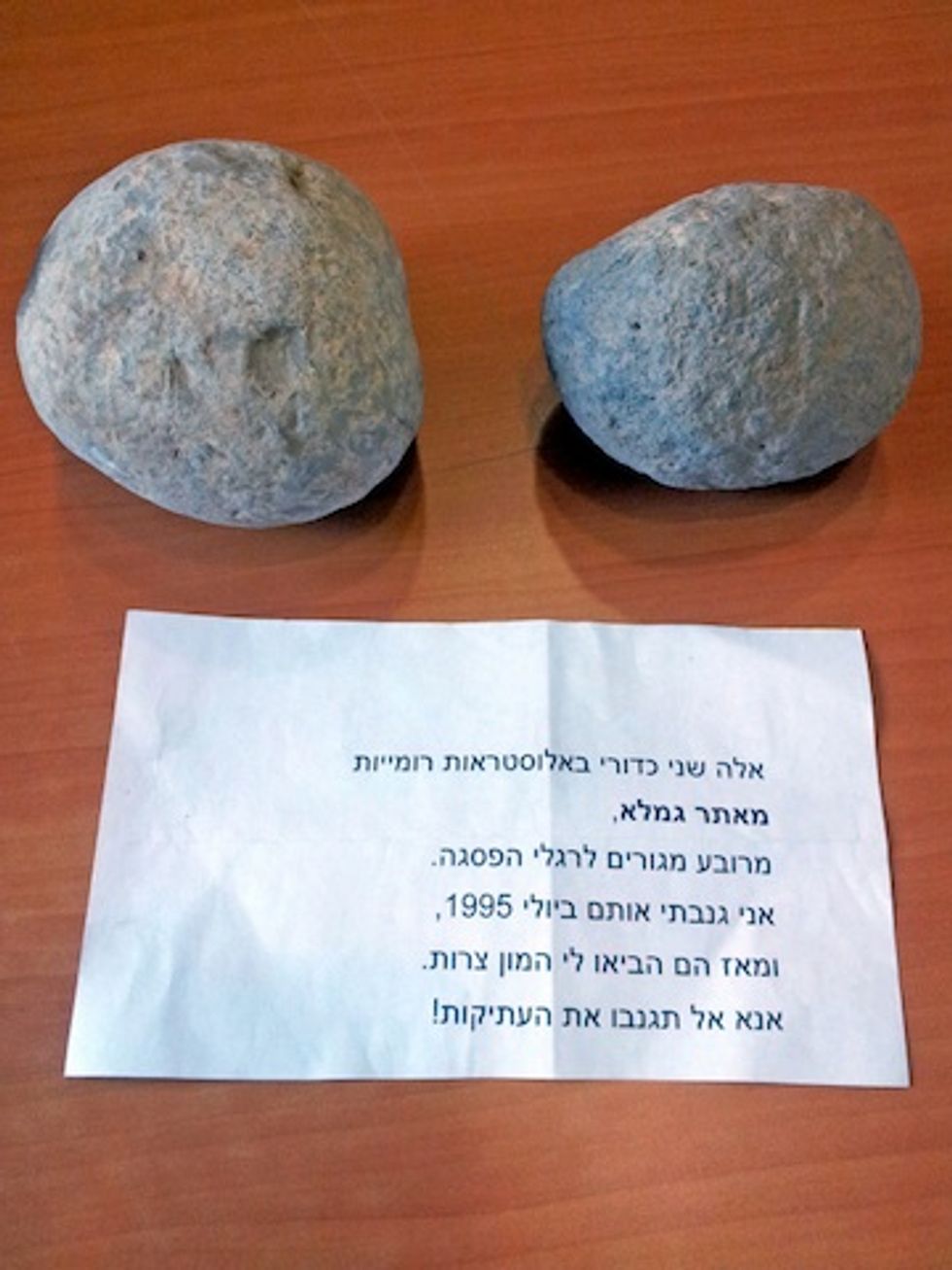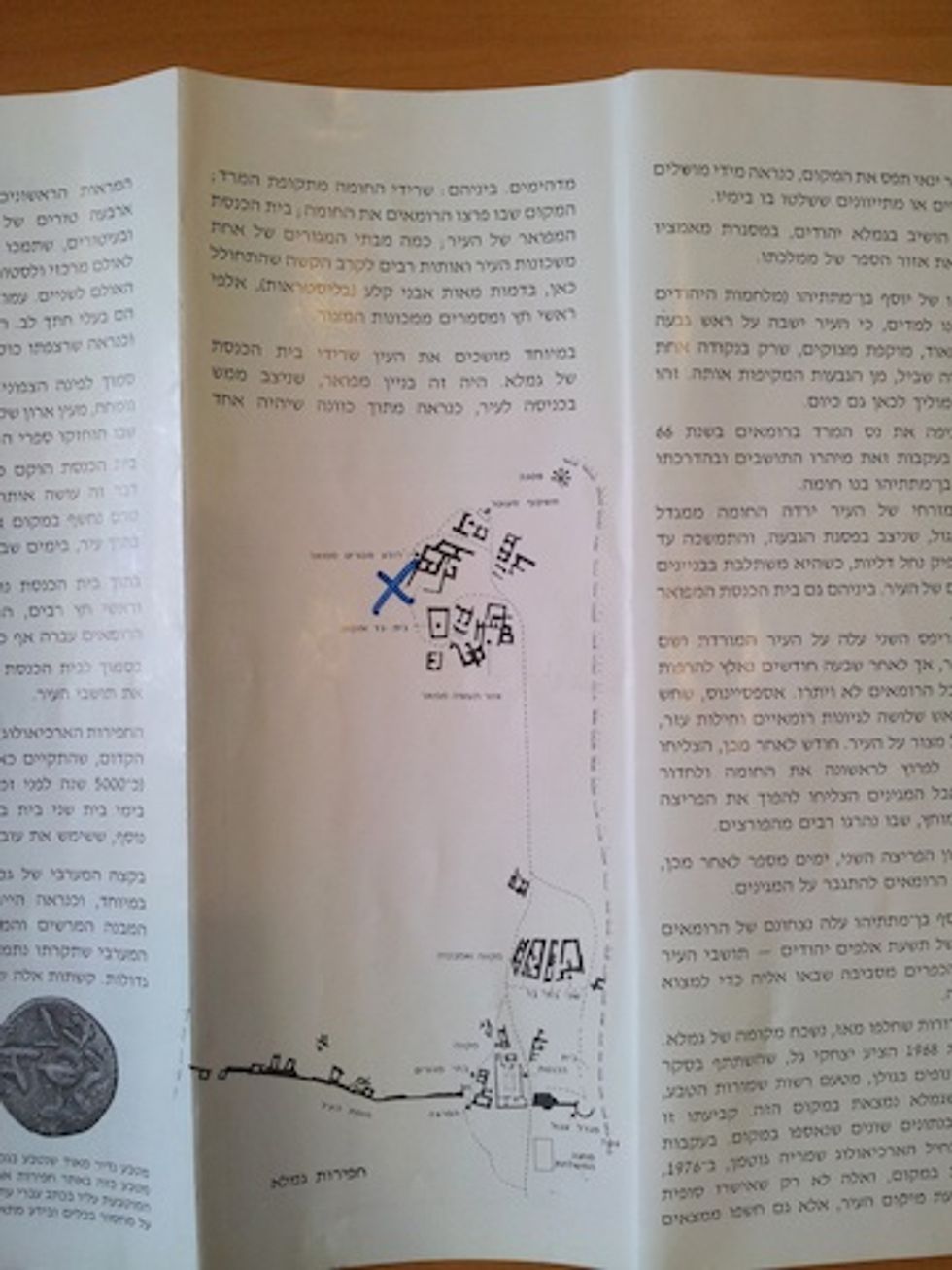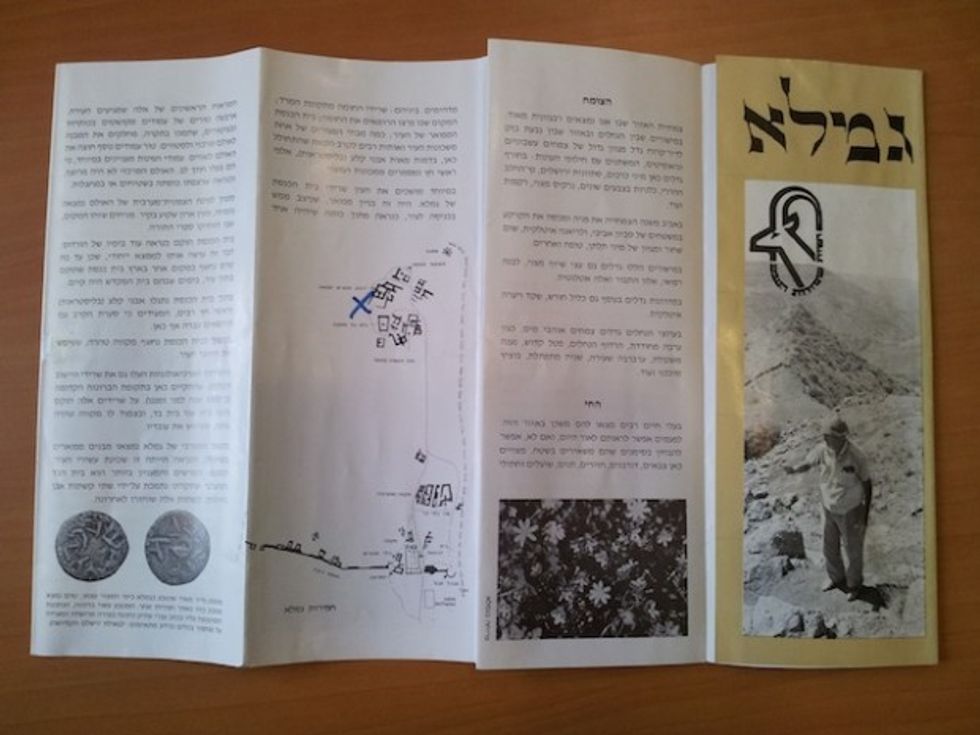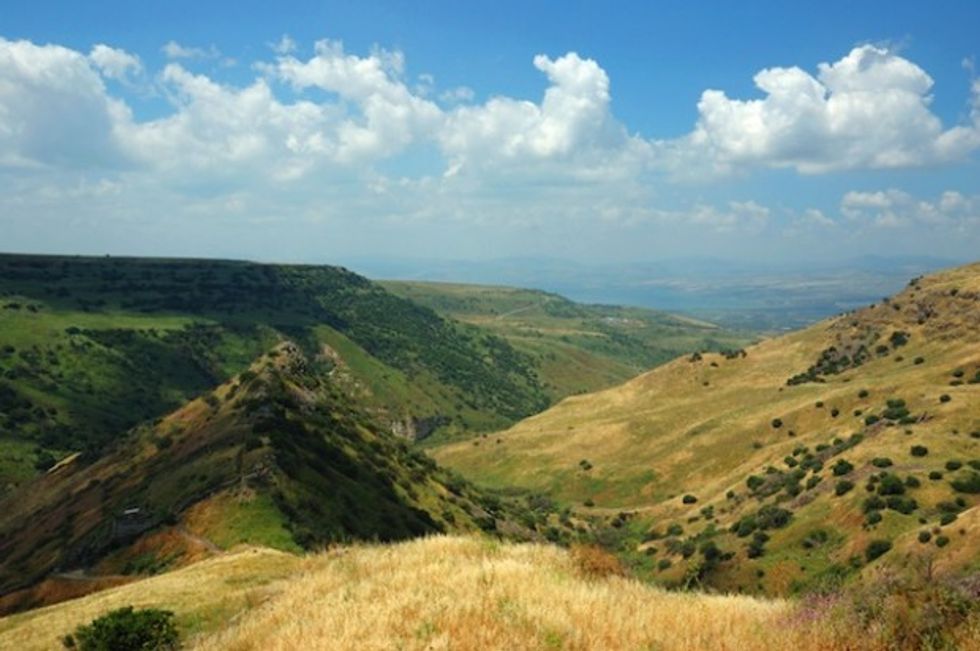
Source: Shutterstock

An apparent thief who felt terribly guilty about having stolen 2,000-year-old artifacts two decades ago anonymously dropped them off to an Israeli museum with a note admitting his crime and describing the “trouble” his bad deed had caused him.
The Israel Antiquities Authority said Monday that Amos Cohen, an employee of the Museum of Islamic and Near Eastern Cultures in Beersheba in southern Israel, “did not believe his eyes” last week when he opened the bag left in the museum’s courtyard.
Inside were two sling stones, a map of the Gamla Nature Reserve in the Golan Heights with an X marking the spot from which they were taken, along with a typewritten note.
“These are two Roman ballista balls from Gamla, from a residential quarter at the foot of the summit," the note said. "I stole them in July 1995 and since then they have brought me nothing but trouble. Please, do not steal antiquities!”

Ballista balls are an ancient missile-like weapon that were launched at enemy strongholds.
During the first century A.D., Gamla was a Jewish stronghold in the Golan Heights. The ancient historian and commander Josephus Flavius described the Roman siege of Gamla in 67 A.D which, though repelled at first, ultimately defeated the Jews.
All but two of the 9,000 Jewish inhabitants are believed to have been killed or committed suicide to avoid capture by the Roman troops.


Danny Syon, an archaeologist with the Israel Antiquities Authority who excavated at Gamla, said that 2,000 such stones were found at the mountainous site. Each one was manually chiseled at Gamla by Roman soldiers or prisoners.
“This is the site where there is the largest number of ballista stones from the Early Roman period,” he said. “The Romans shot these stones at the defenders of the city in order to keep them away from the wall, and in that way they could approach the wall and break it with a battering ram.”
In Gamla, archaeologists have also discovered one of the oldest synagogues ever excavated that is believed to have served the Jews who lived there 2,000 years ago.

The Antiquities Authority said it has received other packages from contrite thieves over the years, most notably a 2,000-year-old Jewish coffin that had been stored in a Tel Aviv bedroom whose owner eventually realized the “morbid” item he had.
“In another case a minister from the state of New York asked for forgiveness for a member of his congregation whose conscience was tormented by the fact he took a stone from Jerusalem more than a decade earlier,” the Antiquities Authority said.
That stone was returned as well.